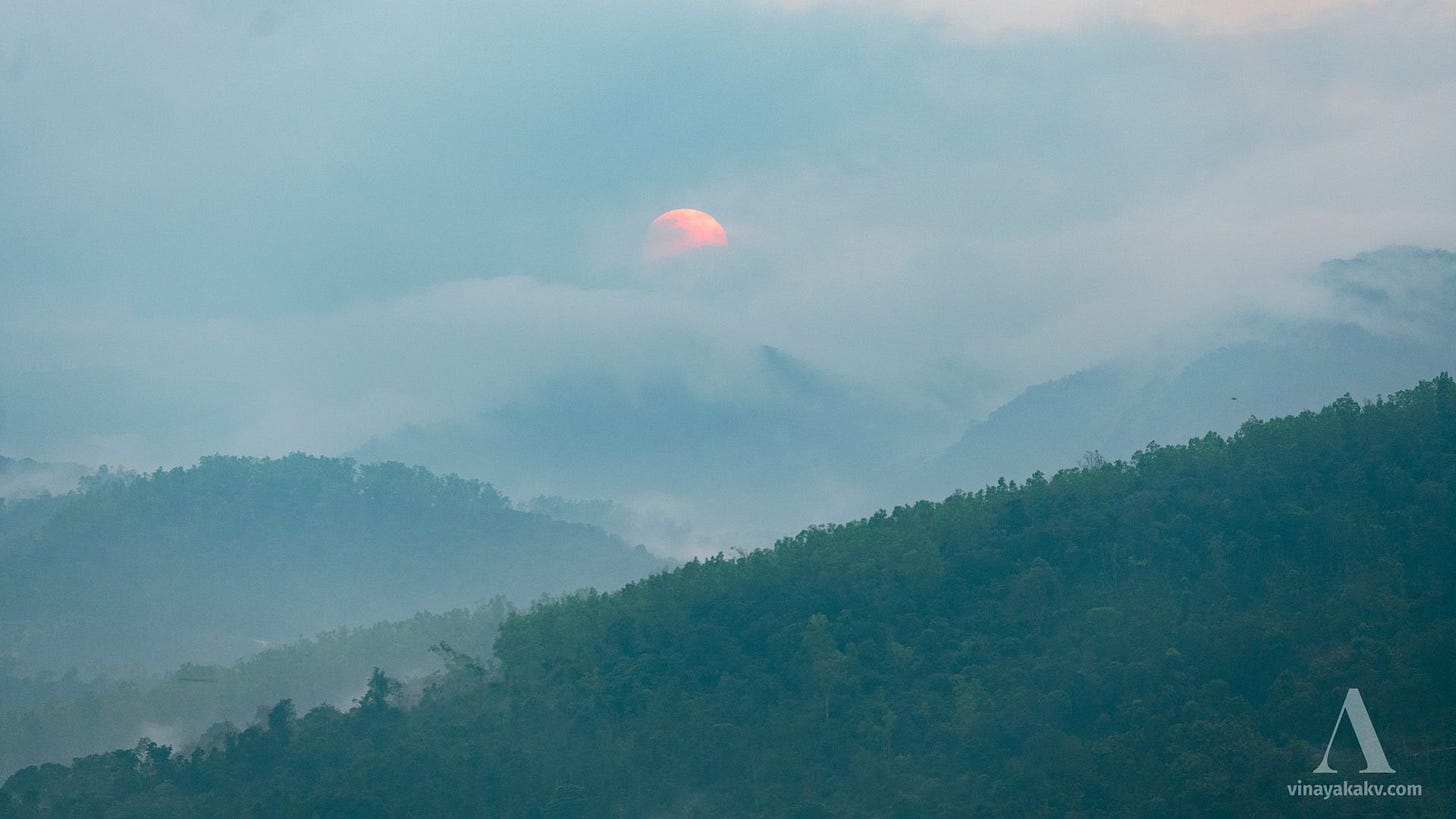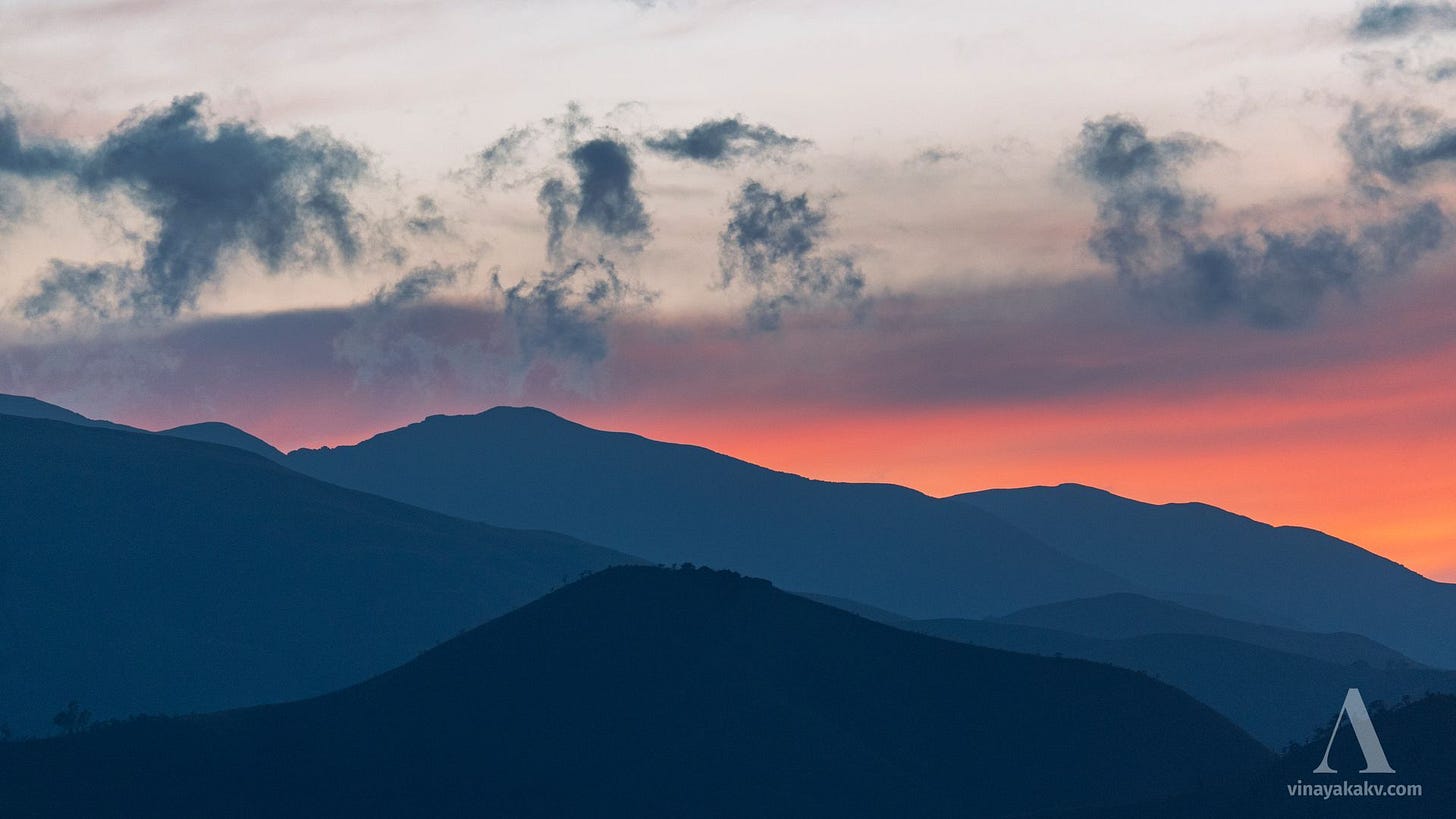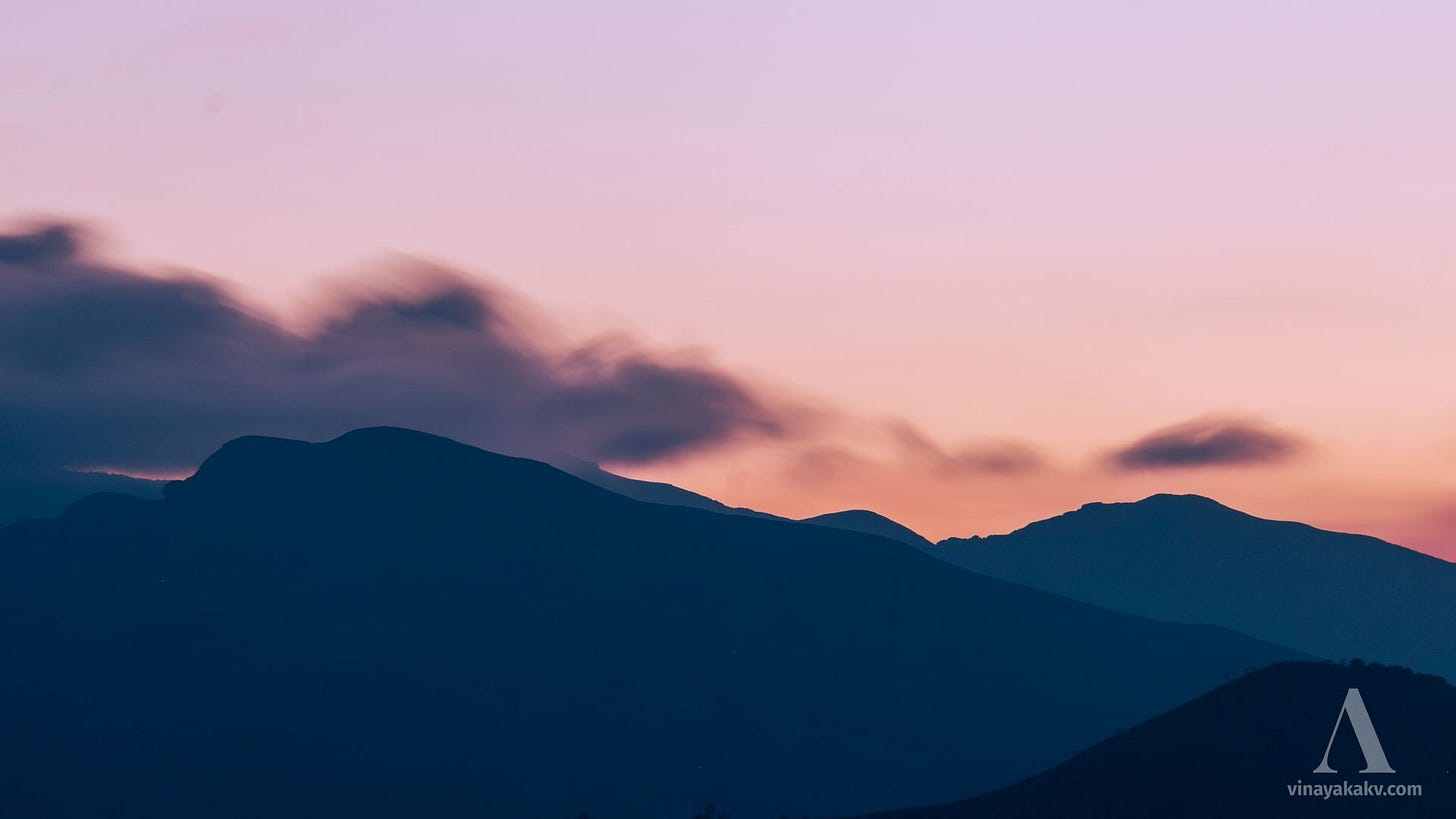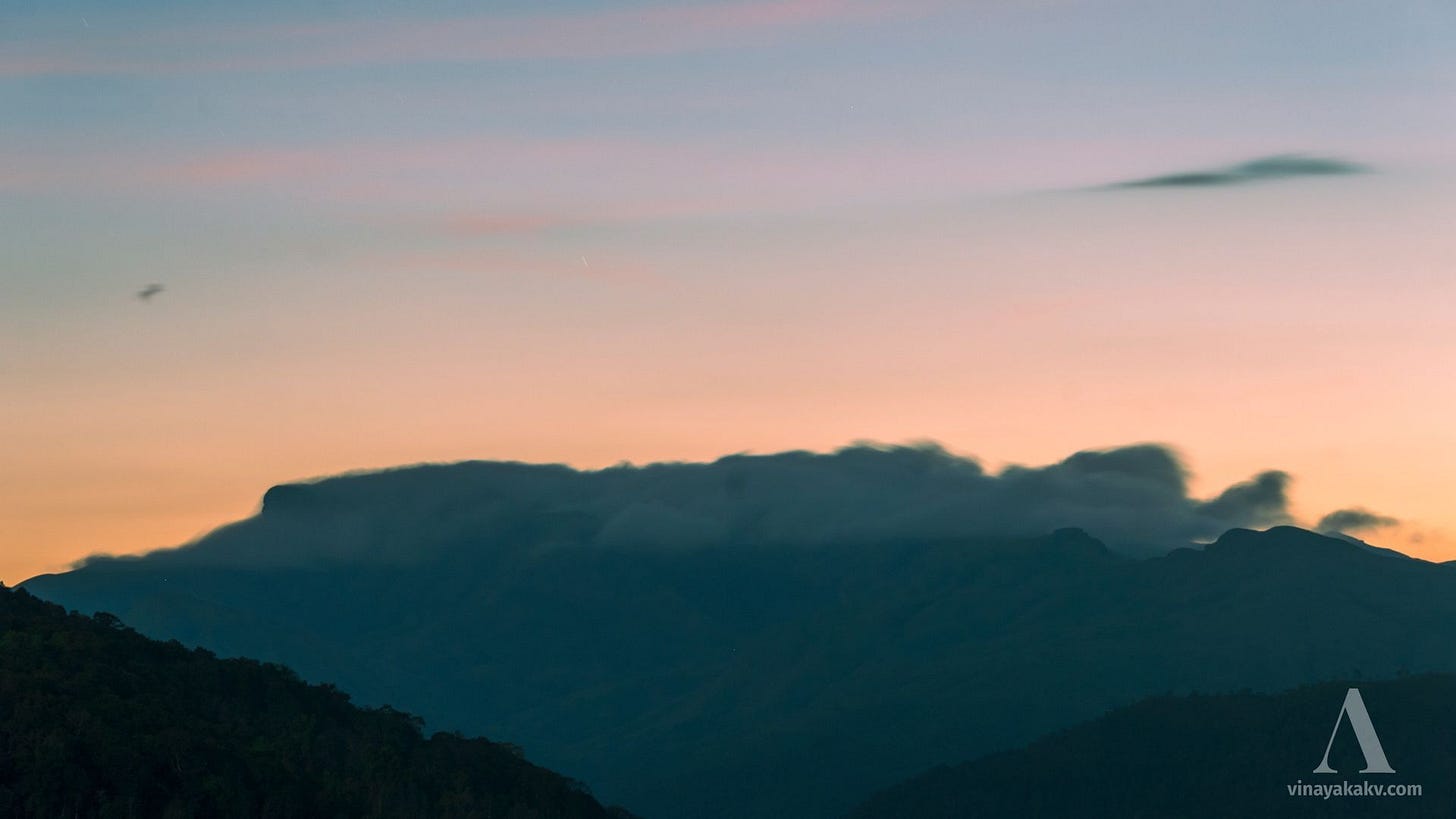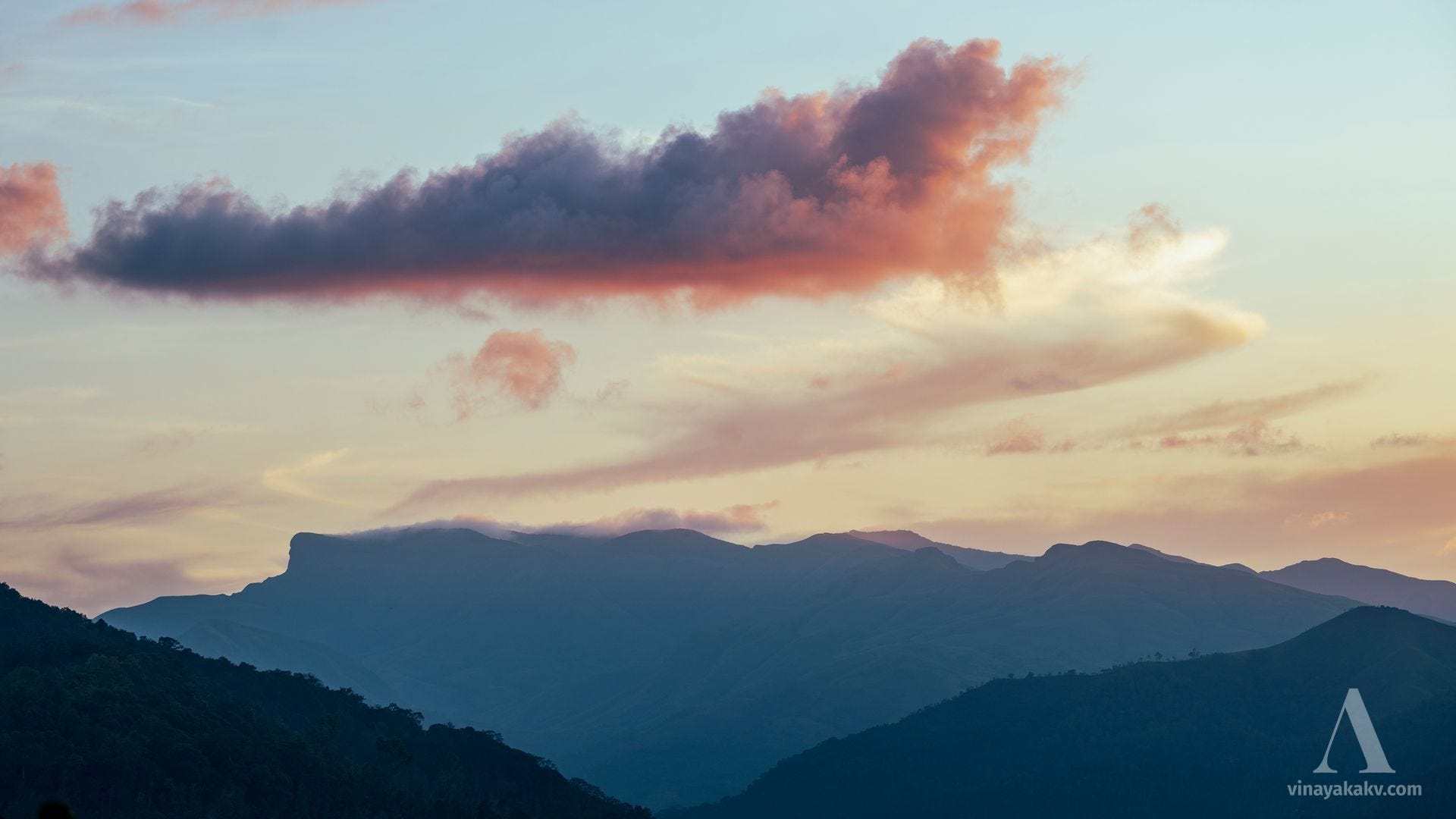Colors of Post-Monsoon
Post-monsoon, India drowns in dry air and poor air quality due to various factors. South India, however, gets rare opportunities to clear the bad air, and this lucky window opens up opportunities...
The end of the Southwest Monsoon in India allows dry air from North India to sweep into South India. Most of the time, this dry air carries industrial and agricultural pollutants, causing PM2.5 levels and the Air Quality Index (AQI) to rise—though not as severely as in the regions where these pollutants originate. Visibility suffers, and many mountain ranges vanish from sight for months. However, this year, the strong North-East monsoon is pushing winds and moisture into the Western Ghats, leading to unseasonal rains.
The strong winds and rain had cleared the pollutants, improving air quality and visibility considerably. The sunset, with its abundant clouds and clear air, turned out to be magical, showcasing a stunning display of sunrays.
During the sunset, the sun did not fade into the dull, dim red typical of hazy days; instead, it retained its intensity and vibrant orange hue.

Moisture interacting with sunlight and mountains can create striking fractus clouds, floating low in the atmosphere.
The air, lifted into the atmosphere by the mountain cliffs and condensing into clouds, creates a fascinating visual spectacle. This effect becomes even more intriguing when captured with a long-exposure shot, which softens the sharpness and highlights the direction of the clouds' motion, adding a dynamic element to the scene.
The clouds closely followed the ridges of the mountains, creating an intriguing visual. This phenomenon was particularly fascinating because the alignment of the mountain ridges with the wind direction is rare.
The train of clouds draped over the mountain ridge was a beautiful sight.
The moisture in the upper levels of the atmosphere, combined with wind patterns, helped form distinctively shaped clouds. Paired with the vibrant post-sunset colors, they looked absolutely astounding.
Mountains perfectly aligned to the west cast a shadow, creating a unique silhouette.
Varying levels of darkness in the southwest created a stunning layering effect.
This level of visibility is unfortunately rare, as pollutants often cause haze. On most days, viewers must settle for washed-out colors and distant mountains hidden from view.



